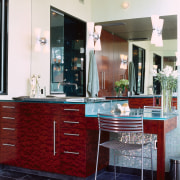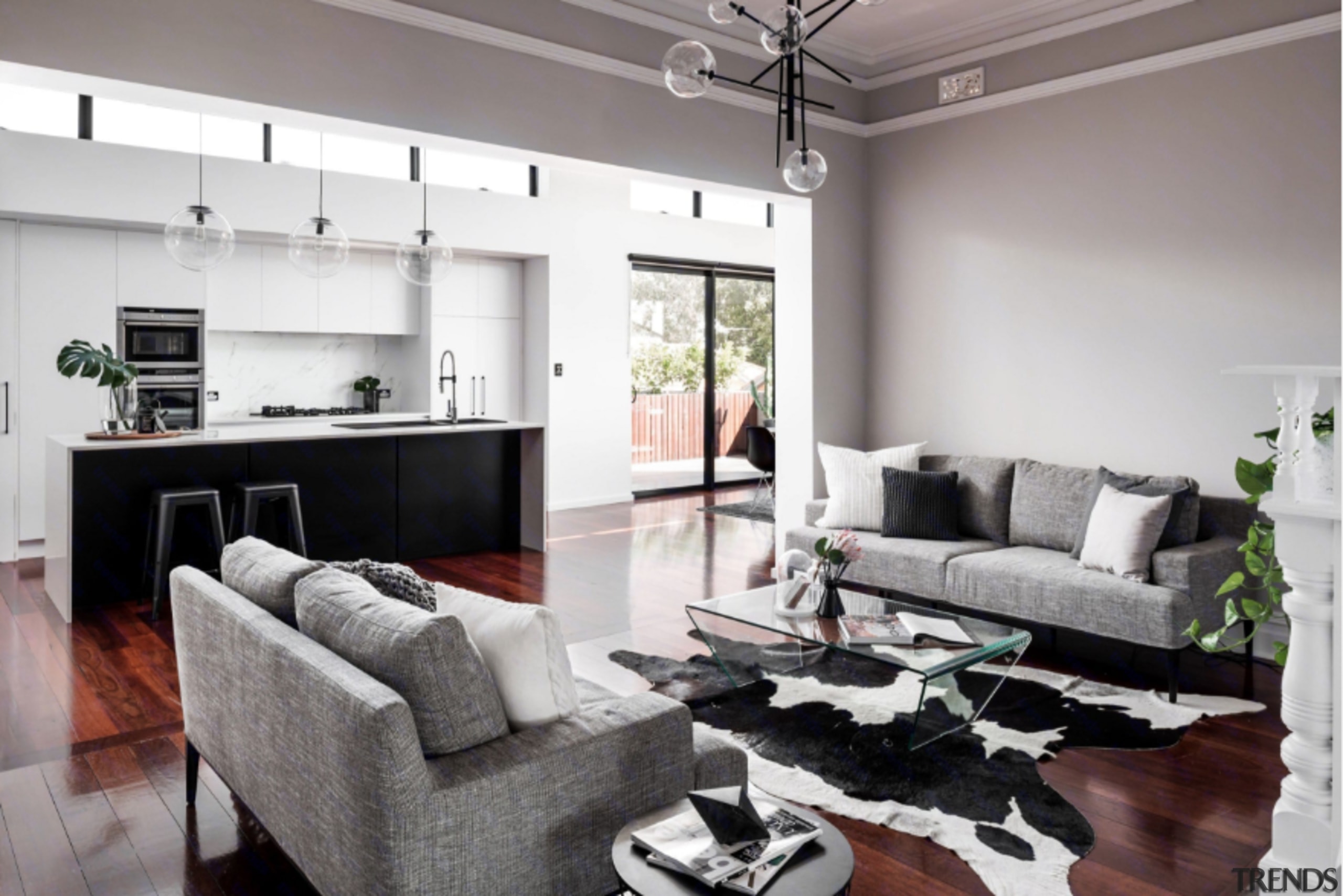Balancing act
Disparate tones, textures and materials achieve a fine aesthetic harmony in this bathroom
Achieving an interior that effectively combines a range of materials and tones takes a delicate touch. As well as finding a balance of color, the warmth of the finishes and even their textures and shapes also need to be addressed to achieve perfect harmony.
For this bathroom, the client wanted to combine colors and materials in such a way as to create a functioning work of art, says designer Marcus Gleysteen.
"Window frames were custom-made from steel, along the lines of a Mondrian painting," says Gleysteen. "Their uneven but harmonized proportions are indicative of the make-up of the entire bathroom."
The first step to achieving this delicate balance was to lay out a diverse array of tiles, wood, glass, stainless steel and slate samples on a workboard.
By process of addition and elimination, the designer arrived at a material palette that meshed tonally, texturally and in terms of warmth.
"The predominating Babinga African hardwood veneer has a pomele grain, which provides a warm, rich finish," says the designer. "This balances the coolness of the glass vanity tops, stainless steel sinks and tub, and the dark slate floors."
Texture was also important. The Babinga veneer's smooth, furniture-like texture is contrasted by the use of a coarse wood for the ceiling above the tub. Hundreds of geometric micro tiles on the shower stall walls are offset by the irregular-shaped river pebbles embedded in grout on the shower floor.
"The pebbles have a fantastic feeling underfoot almost like a foot massage, and at the same time provide a safe, non-slip surface," says Gleysteen.
As with the customized windows, proportions were important to the finished effect. The cabinetry handles were chosen, in part, because they could be cut to length. This enabled the designer to select specific handle lengths to play off the proportions of the cabinetry doors. Their slender diameter also matches the thickness of the glass countertops.
The emphasis on straight lines, with the handles, cabinetry and tilework, is also in contrast with the wood ceiling, which has a curved, fluid shape, dipping from the windows and flowing upwards above the shower stall.
Scale was another important aspect of the room's delicate balance.
"The micro tiles are set off against the large slate floor tiles," says Gleysteen. "Glass blocks echo their shape in another size again and provide a translucent screen for the water closet, separating it from the rest of the room."
Credit list
project architect
Main contractor
Faucets
Shower fittings
Floor
Lighting
Windows
Glass blocks
project manager
Cabinetry handles
Hot water system
Shower stall
Tiles
Ventilation
Ceiling
Story by: Trendsideas
Home kitchen bathroom commercial design











